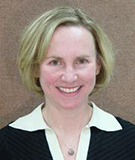How where you’re born influences the person you become
adrianaBy Samuel Putnam, Bowdoin College and Masha A. Gartstein, professor of psychology, Washington State University
As early as the fifth century, the Greek philosopher Thucydides contrasted the self-control and stoicism of Spartans with the more indulgent and free-thinking citizens of Athens.
Today, unique behaviors and characteristics seem ingrained in certain cultures.
Italians wildly gesticulate when they talk. Dutch children are notably easygoing and less fussy. Russians rarely smile in public.

As developmental psychologists, we’re fascinated by these differences, how they take shape and how they get passed along from one generation to the next.
Our new book, “Toddlers, Parents and Culture,” explores the way a society’s values influences the choices parents make – and how this, in turn, influences who their kids become.
The enduring influence of cultural values
Although genetics certainly matter, the way you behave isn’t hardwired.


